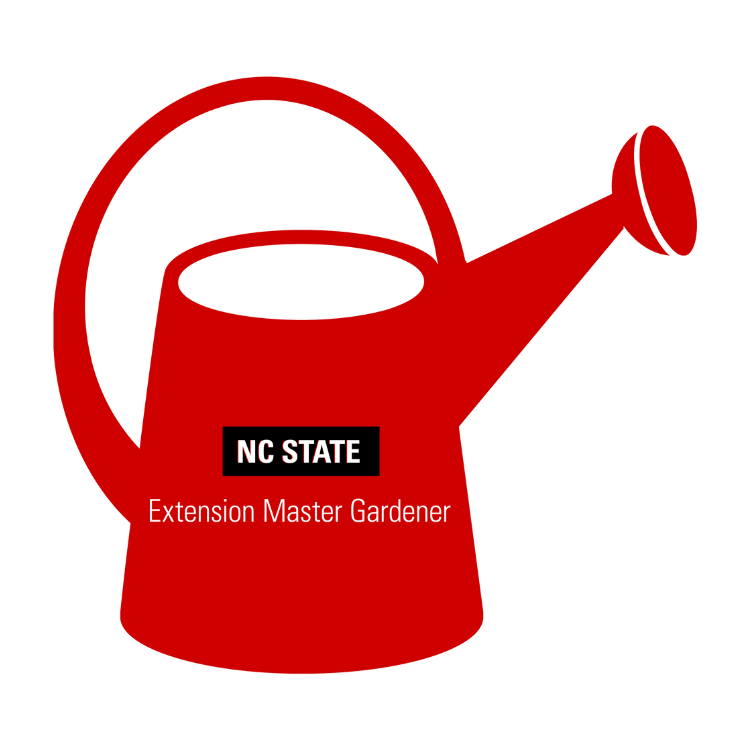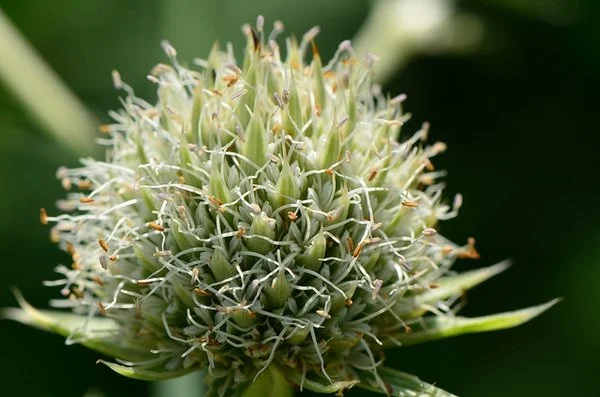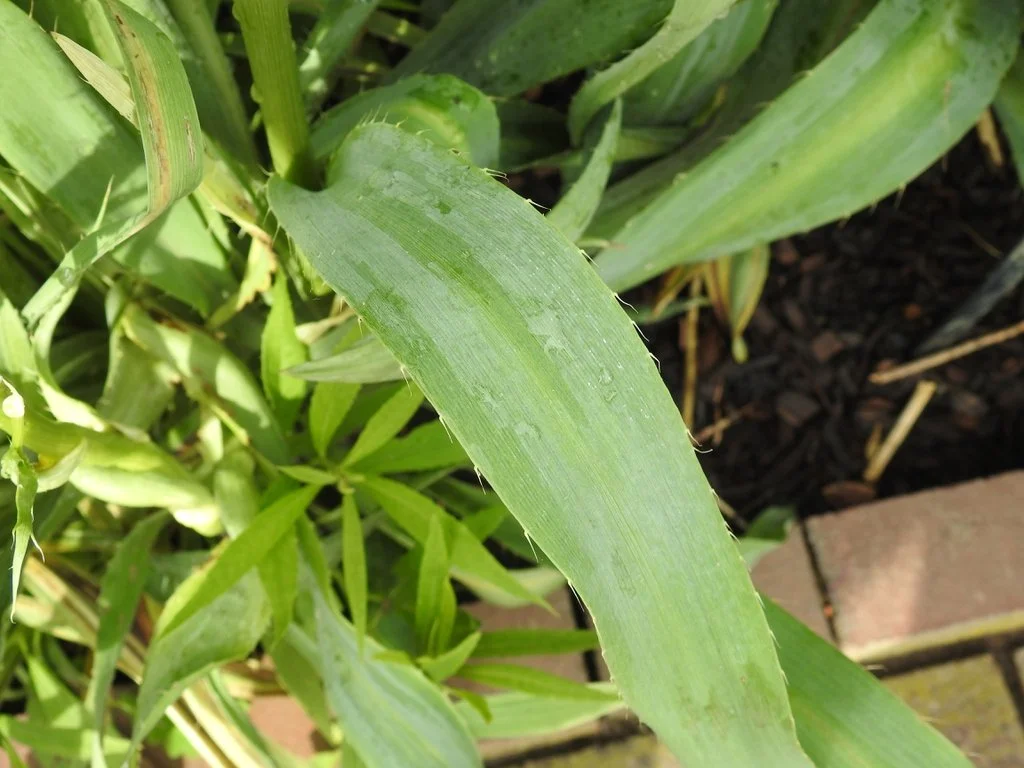Rattlesnake Master (Eryngium yuccifolium)
Rattlesnake Master (Eryngium yuccifolium) is a native herbaceous perennial in the carrot family. The common name may refer to previous traditional medicinal use by Native Americans, although not necessarily for rattlesnake bites. Native Americans used the leaves to weave baskets and sandals. This plant was selected as the 2016 NC Wildflower of the Year.
The stiff upright stems of this plant hold striking flower heads, and the unusual clumping foliage adds interest, providing coarse texture in the landscape. The small, dense (acorn-, button-, or ball-shaped) flowers are composed of many tiny parts, tightly packed in globe-shaped heads 1-in. across and grouped in clumps of 8 --10. They are good in bouquets whether fresh or dried. They bloom from June to August and turn from a green-white to a blue color at maturity. They have a honey-like smell and attract pollinators (including Monarch and Skipper butterflies). Bristly-edged, sword-shaped, medium-green leaves (to 3-ft. long) resemble yucca.
Choose a location carefully because the leaves end in stiff spines that could be unpleasant if planted near a walk-way. Plants tend to open up and sprawl if grown in overly fertile soils or anything less than full sun. Massing plants in naturalized areas where they can provide some support to each other may be the best solution for this problem.
It may grow 4- to 5-ft. tall and spread 2- to 3-ft. wide. It does best in full sun and, although it adapts well to many soil types, including shallow rocky soils, it prefers dry, loamy sand with little organic matter.
Propagate this plant through seed or divide plants in late spring or early fall. (The Missouri Botanic Garden says Rattlesnake Master is a tap-rooted plant that transplants poorly and is best left undisturbed once established.) It will self-seed in optimal conditions.
It resists the challenges of deer, drought, rabbits and wet soil. This plant works well in the middle of perennial borders or planted in small groups in open woodlands, naturalized areas, and pollinator gardens. Leaving the plants uncut through the winter will add landscape interest.
Moles and voles feed on the crowns, especially in winter.
By Kathryn Copley, Extension Master Gardener SM Volunteer, Brunswick County, NC
For more information on gardening in Brunswick County, please call the Brunswick County Cooperative Extension Office, 910.253.2610.
SOURCES:
Eryngium yuccifolium | North Carolina Extension Gardener Plant Toolbox (ncsu.edu)
Eryngium yuccifolium | Missouri Botanical Garden (missouribotanicalgarden.org)



